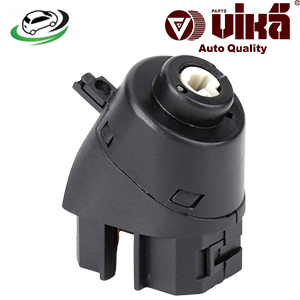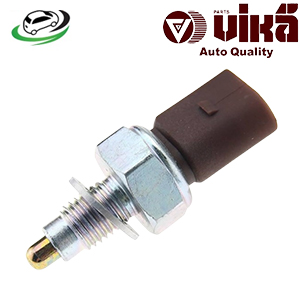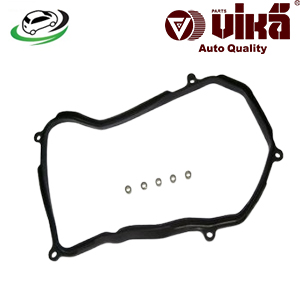-27%
Get Transmission Pan Gasket VW Passat B5/B5.5 96-2008 / AUDI 80 B3 Saloon/80 B4 Avant/A4 B5/A4 B6/A4 B7/A6 C4/A6 C5/COUPE B3 01N321370
The transmission pan gasket is a crucial component in a vehicle’s transmission system, playing a vital role in sealing the transmission pan and preventing fluid leaks. Understanding its function, importance, types, maintenance, and replacement can greatly contribute to the longevity and performance of your vehicle’s transmission.
Function and Importance of the Transmission Pan Gasket
The transmission pan is a metal container located at the bottom of the transmission housing, and it holds the transmission fluid that lubricates, cools, and powers the transmission system. The transmission fluid is critical for the proper functioning of the transmission, as it reduces friction, prevents overheating, and enables smooth gear shifts. The transmission pan gasket is a seal that sits between the transmission pan and the transmission housing, ensuring that the fluid inside the pan does not leak out.
Given that automatic transmissions are complex systems involving many moving parts, any loss of transmission fluid due to a faulty gasket can lead to serious issues. A leak can cause the transmission to overheat, wear out more quickly, or even fail entirely. Transmission fluid also tends to pick up metal particles and debris from the transmission’s moving parts. If the gasket fails and fluid leaks, it can lead to contamination of the transmission fluid with outside dirt, which can further degrade the transmission’s performance.
Types of Transmission Pan Gaskets
Transmission pan gaskets are made from a variety of materials, each with its own set of advantages and disadvantages:
- Rubber Gaskets: Rubber is a common material for transmission pan gaskets due to its flexibility and ability to form a tight seal. Rubber gaskets are easy to install, as they can be slightly stretched to fit perfectly. However, rubber can degrade over time, especially when exposed to high temperatures and chemicals found in transmission fluid. This degradation can lead to leaks, requiring periodic replacement.
- Cork Gaskets: Cork gaskets are another traditional choice. Cork is slightly compressible, allowing it to conform to the surfaces it seals, which can help in preventing leaks. Cork gaskets are generally durable and resistant to oil, but they can dry out and become brittle, especially in older vehicles or in environments with extreme temperature fluctuations. This brittleness can cause them to crack and lose their sealing capability.
- Composite Gaskets: Composite gaskets are made from a combination of materials, such as rubber and metal or cork and rubber. These gaskets aim to combine the strengths of different materials to provide a superior seal. They are often more resistant to temperature changes and can provide a longer-lasting seal compared to pure rubber or cork gaskets.
- Metal Gaskets: Metal gaskets, often made of steel or aluminum, are used in some high-performance or heavy-duty applications. These gaskets are extremely durable and can withstand high temperatures and pressures. However, metal gaskets require precise installation and may need additional sealant to ensure a proper seal. They are less forgiving than rubber or cork gaskets, making them a bit more challenging to install.
Signs of a Faulty Transmission Pan Gasket
A failing transmission pan gasket can manifest through several symptoms:
- Fluid Leaks: One of the most obvious signs of a faulty transmission pan gasket is a fluid leak. Transmission fluid is typically red or brown and has a slightly sweet smell. If you notice spots of this fluid on the ground under your vehicle, it’s a strong indication that your transmission pan gasket might be leaking.
- Low Transmission Fluid Levels: If your transmission fluid levels are consistently low despite regular top-ups, it could be due to a leak in the transmission pan gasket. Low fluid levels can lead to overheating and increased wear on the transmission components.
- Transmission Slipping or Rough Shifting: If your transmission is slipping or you’re experiencing rough or delayed shifting, it could be a sign that your transmission fluid level is low due to a leaking gasket. Without sufficient fluid, the transmission cannot function properly.
- Overheating Transmission: A transmission that frequently overheats may be suffering from low fluid levels due to a leaking gasket. Overheating can cause severe damage to the transmission and should be addressed immediately.
- Unusual Noises: Grinding or whining noises from the transmission can be a sign of low fluid levels, which could be due to a leak in the transmission pan gasket.
Maintaining and Replacing the Transmission Pan Gasket
Maintaining a healthy transmission pan gasket is essential for the overall well-being of your vehicle’s transmission system. Here’s how you can ensure your gasket stays in good condition:
- Regular Inspections: Periodically check under your vehicle for signs of fluid leaks. Also, inspect the transmission pan gasket area for any signs of wear or damage. Early detection of a problem can save you from more extensive and expensive repairs down the road.
- Fluid Level Checks: Regularly check your transmission fluid levels. If you notice the fluid level dropping, inspect the pan and gasket for leaks. Remember that driving with low transmission fluid can cause serious damage to your transmission.
- Transmission Service: During routine transmission service, the pan is usually removed to replace the transmission fluid and filter. This is an excellent opportunity to inspect the pan gasket for wear and replace it if necessary. Replacing the gasket during a transmission service is a cost-effective way to ensure a leak-free system.
- Use Quality Parts: When replacing your transmission pan gasket, always opt for a high-quality gasket that’s compatible with your vehicle. Using cheap or incorrect gaskets can lead to leaks and other issues.
- Proper Installation: Ensuring that the gasket is installed correctly is crucial. This involves cleaning the mating surfaces thoroughly, ensuring the gasket is properly aligned, and tightening the bolts to the manufacturer’s specified torque. Over-tightening can damage the gasket or warp the pan, while under-tightening can lead to leaks.
Follow us on Facebook for more parts.



